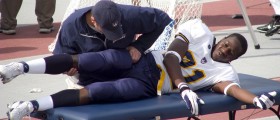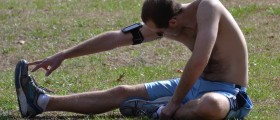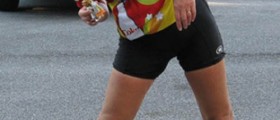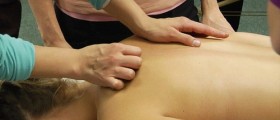Hamstring injury can comprise an injury of either the muscle or the tendon (the substance that connects bone and muscle). The injury is common and can be very troublesome and painful, so proper treatment is absolutely necessary. It does not heal itself and can be a lasting problem if not addressed correctly.
Hamstring injury can occur as a result of overstriding, sudden surges of movement, missed steps and for many other similar reasons. The initial, acute stage of the injury sees an immediate development of pain and every physical activity can become painful. In some cases, if the injury is severe enough, bruising and swelling may occur. This can develop several days after the causative event. If the injury is considered to be Chronic, the outlook can be bleak with regard to full healing of the injured area.Rehabilitation
Similar principles apply to the healing of all muscular injuries. Rest and immobilisation are absolutely necessary in the initial stages. If required, support and assist the leg during activity, such as through the use of crutches. Apply some ice to the area and compress it using a bandage for about twenty or thirty minutes - don’t apply the ice directly to the skin. Icing should be continued for about a week after the injury, and should be applied roughly every 2 to 4 hours. Most importantly, avoid further use of the muscle as much as possible in the first week of recovery, and retain the use of crutches during this time.
After about a week, try and gently stretch the hamstring muscle. If necessary, ice the area and try not to cause pain whilst stretching. Gradually, the flexibility in your stretching should increase over time. Try to stretch other lower body muscles at the same time in order to maintain a balance.
You can begin to strengthen the affected area after a successful stretching regime - i.e., when stretching no longer causes pain. Perform gentle resistance exercises, at first beginning with some simple contraction and releasing of the muscle. Stop if pain occurs or worsens. Ice the muscle in order to avoid inflammation and make sure not to overexert the muscle in the early stages of rehabilitation. Gradually increase the speed of repetitions as flexibility returns.
Make sure to avoid any potentially risky activities that might cause a recurrence of the injury. Specifically, do not take part in sprinting, cycling, hurdling, basketball, soccer or football until the muscle is fully recovered. Even when you do return to sports or physical exercise, start slowly. Begin with walking and build up your strength until able to move on to more strenuous activities. Do not rush the recovery and remember to maintain strength as well as flexibility in your recovery plan. Don’t forget to pay attention to other parts of the lower body, such as quadriceps, hip flexors, calves and glutes.
Improper rehab may lead to chronic injury, which can last for years. Chronic injuries may require physical therapy, medication and painkilling injections. Rehab is the same for both types of injury, but with chronic injury, the outlook may be much less optimistic.

















Your thoughts on this
Loading...